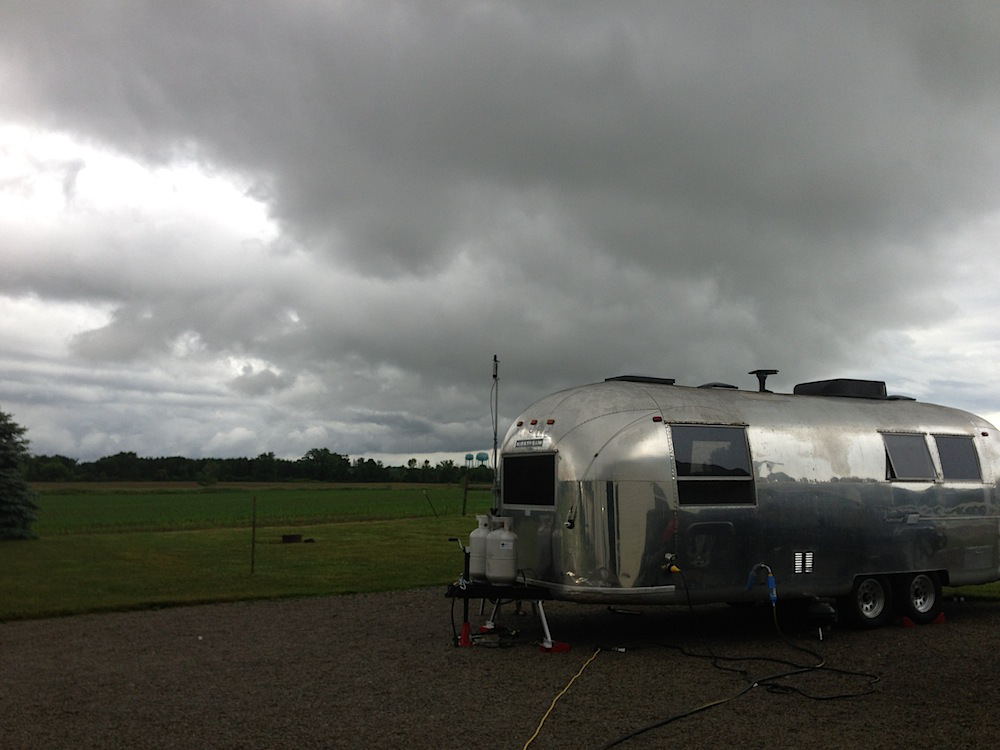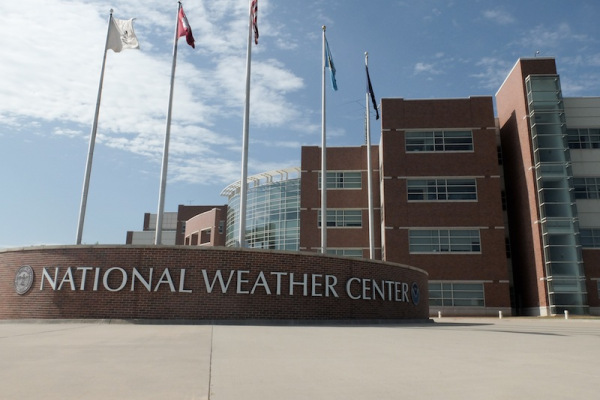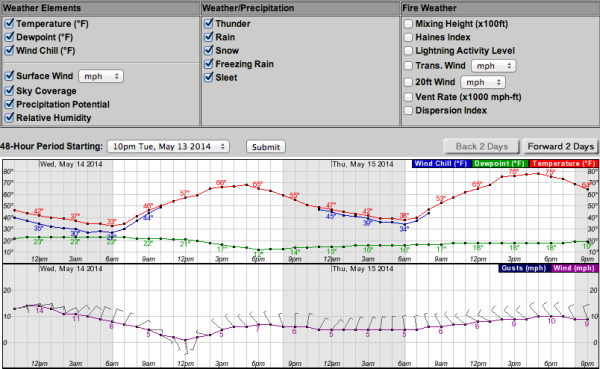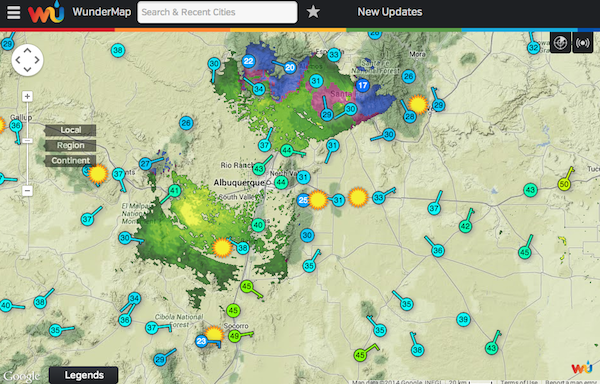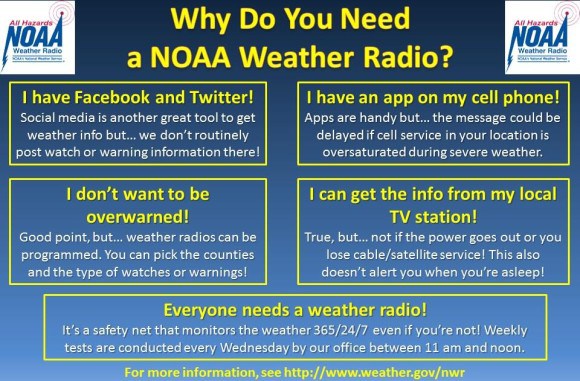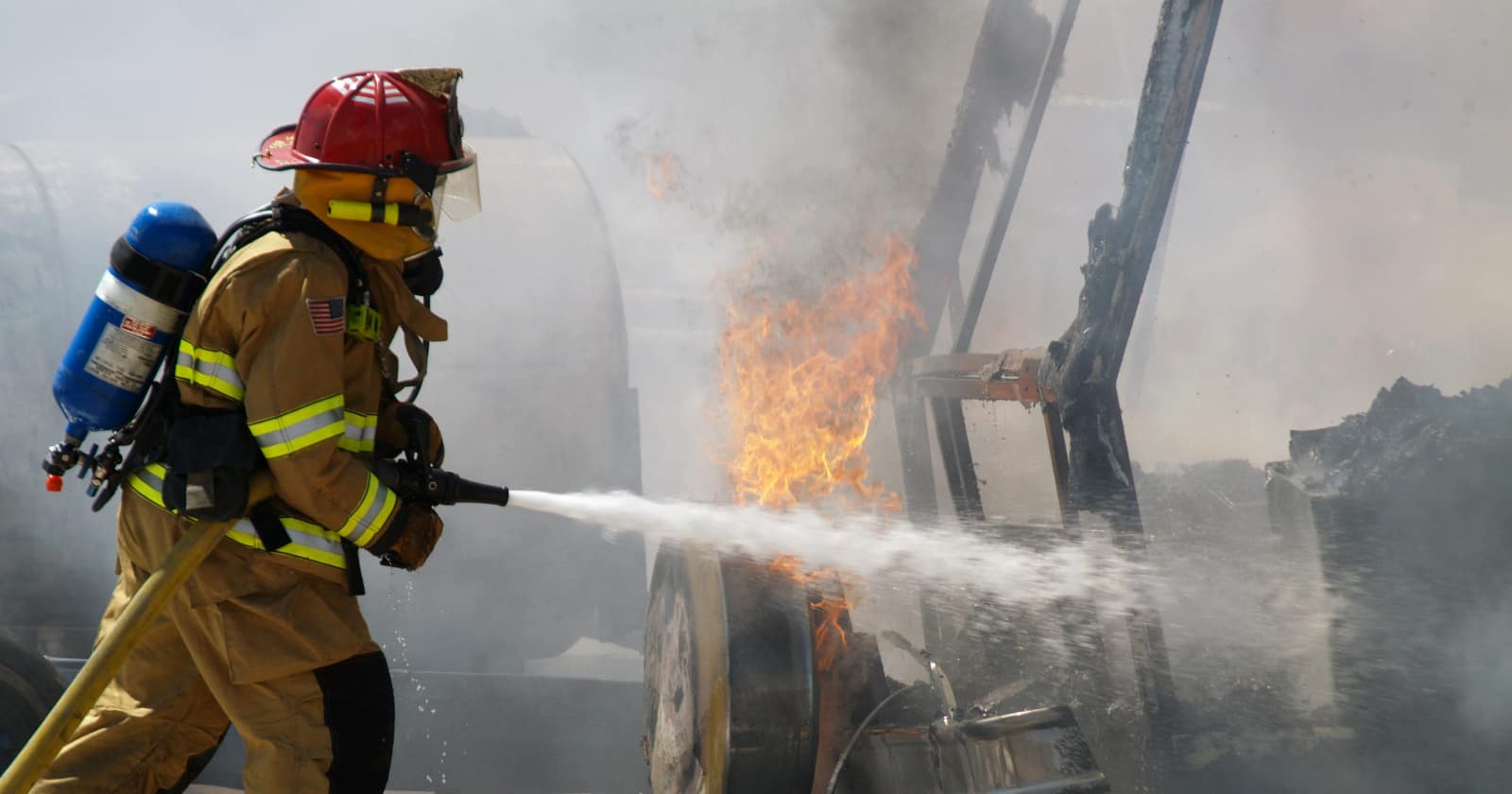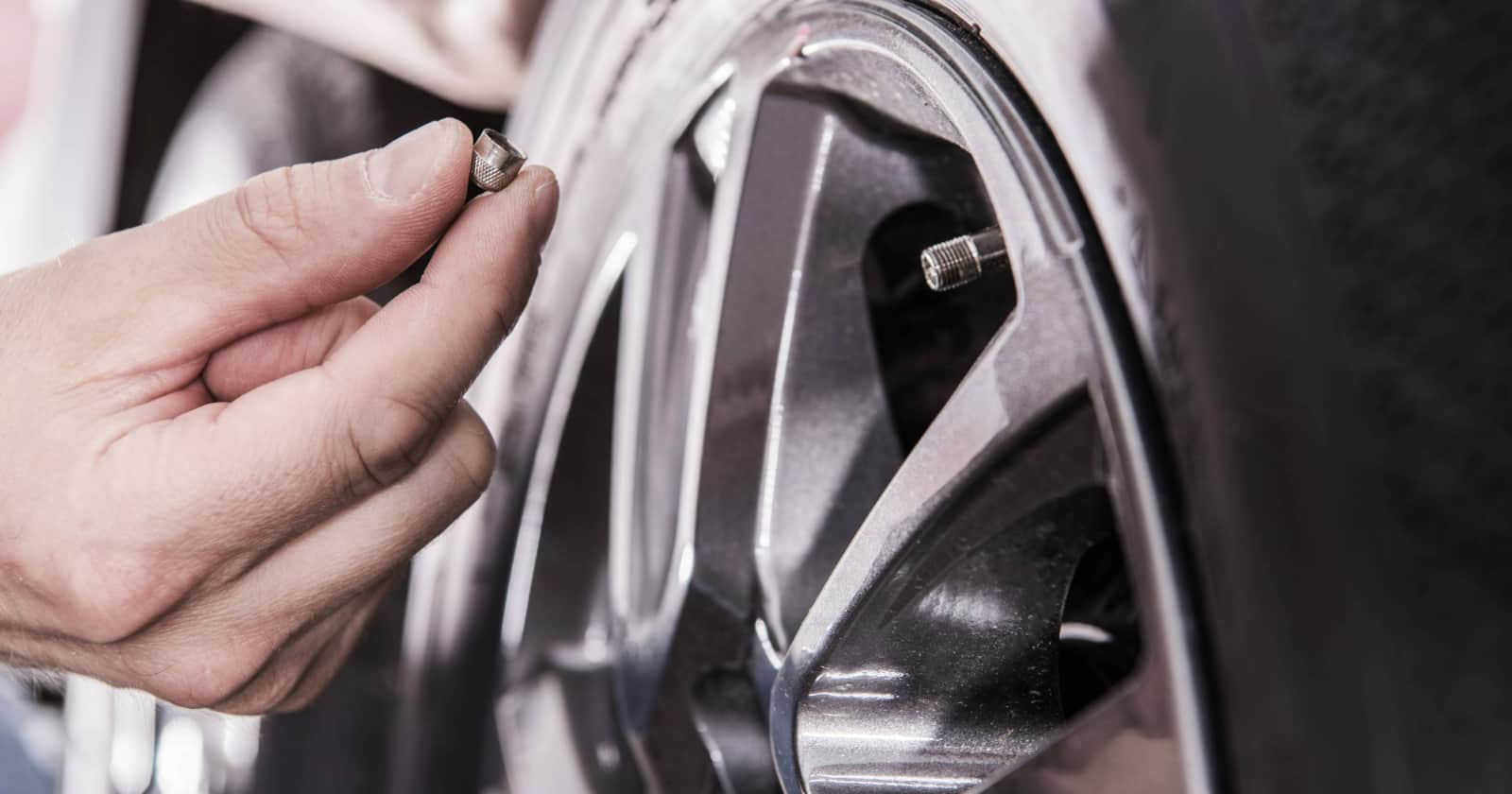This article first appeared on Snowmads. It is reproduced with permission.
We had a couple near-misses with deadly tornadoes recently while living in our RV, leading us to wonder “What are the best severe weather safety tips for those of us living or vacationing in a home on wheels?” Ultimately, even the weather experts can’t prepare us for every scenario, such as the devastating tornado that hit a campground in Virginia. A lot of the responsibility still falls on us.
We’ve made a lot of decisions lately that involved careful weather considerations. We’re currently parked in Albuquerque, where the wind has been gusting upward of 45 mph the last two nights. We had to make a difficult choice the other day whether to drive through wind advisory areas at high elevations, knowing that RVs are extra susceptible to being tossed around and tipped over in strong wind, or stay put in an area which was soon to be hit with more storms.
Several nights before that, in Oklahoma City, we made a last-minute decision to jump in the car with our dogs and park under the roof of a nearby gas station before a forecasted hailstorm hit. We knew that there wasn’t enough time to move our trailer out of the elements, but preventing potentially costly damage to our vehicle seemed worth it.
Sure, it was an inconvenience driving a few miles and hanging out in the car in the middle of the night, watching radar maps on our iPad while listening to the local weather on the radio, but it was better than having our vehicle damaged and knowing we could have prevented it. Had there been a tornado watch, warning, or high winds, we certainly would have taken cover in a sturdy storm shelter or building and forgotten about trying to save our car!
The best way to protect your family during severe weather is by following basic weather safety guidelines and gathering the most up-to-date weather data available in your particular situation.
We had coincidentally just toured the National Weather Center, home of the NOAA Storm Prediction Center and Norman National Weather Service Forecast Office, that day in Norman, Oklahoma (a fun, free, and informative tour if you’re ever in Oklahoma City).
We were privileged to be able to spend a few minutes picking the brain of Greg Carbin, an esteemed storm prediction meteorologist at the National Weather Service Storm Prediction Center. What follows is a collection of tips for RV dwellers and travelers during severe weather, according to Greg and other experts:
1.) The greatest chance for staying safe during a severe weather event lies in taking personal responsibility and using common sense.
“Taking personal responsibility” means your safety depends primarily on your actions. Don’t wait around for anyone else to tell you when or where to go when severe weather hits. Not reacting in a timely manner to a weather threat not only puts your life at risk, but also the lives of any others who may try to help you get to safety at the last minute. It’s extremely dangerous and selfish to stay behind with your possessions, thinking you can protect them.
Before severe weather hits, have an emergency plan in place so you can act quickly if things turn nasty. Take a moment when you arrive at a new location to find the nearest storm shelter. Ask the staff where the evacuation spot is when you first arrive, especially if you’re in an area prone to tornadoes, hurricanes, or floods. If you aren’t in a staffed campground or they don’t know, you can contact the local police department to find out.
An interesting tidbit from the experts that we didn’t know: there are fewer public storm shelters than there used to be, mostly due to liability concerns. Many people have instead turned to having a private shelter installed at their home.
Having a severe weather plan can come in handy in the event of other emergencies too – natural and man-made.
2.) Seek shelter long before things get really bad. Nothing you own is worth saving more than yourself and your family.
If there isn’t a specified shelter, the next best place to seek refuge is in a building made of poured concrete – not a prefabricated building – and try to put as many walls between you and the exterior of the building as you can. If a less substantial or large-span building like a grocery store, gas station, or Wal-Mart is your only choice, it’s been reported that seeking shelter in a walk-in cooler can offer more protection. Greg Carbin noted that parking garages are typically good examples of well-built structures. Get down low, away from windows, and cover your head with a blanket or your hands.
If you’re in a vehicle and there are no sturdy buildings nearby to take shelter in, the commonly-held belief about hiding under an overpass is not recommended – it’s actually more dangerous in most cases than being in a car or a ditch, due to flying debris being channeled under the road by the wind. You’re likely safer staying in your vehicle with your seatbelt on and getting your head below the level of the windows, covering it with a blanket or your hands.
If you see an area that is quite a bit lower than the roadway, like a ditch or culvert, you can also lie down flat in that area with your hands covering your head as a last resort. This is not commonly recommended though, as flooding is more likely in those areas and you’re putting yourself at risk of drowning if the storm is accompanied by rain.
Lastly, it’s a great idea to have a bug-out bag for times you need to leave and head for shelter. While you may not realistically be able to stock 72 hours’ worth of food and water in a bag in your RV at all times (we definitely don’t have room!), at the very least it should contain important medications or health items, valuables and other irreplaceable items, financial documents and credit cards, insurance policy paperwork, passports, birth and marriage certificates, and other emergency essentials in one place so it can be grabbed as you go to a safe location. If you have time, you can include your laptops or a backup hard drive of your computers, phone chargers, and any other electronics. We always take a book to read too, so we aren’t draining our batteries while we wait out the storm!
3.) Yes, it’s a pretty show, but don’t underestimate lightning.
The majority of lightning victims have been on their way to a safe place but waited too long. As soon as there is any indication of an approaching storm, it’s important to move indoors as quickly as possible. You’re much safer in any kind of building or vehicle than you are outside; just try not to touch any exposed metal if you take refuge in a vehicle.
Summer afternoons are the most dangerous times for lightning strikes. Rain does not signify the beginning of a dangerous storm; thunder does. Anytime you hear thunder you’re at risk of a lightning strike. In the west especially, thunderstorms often do not include rain. If you’re outdoors preparing for a storm, don’t take your time waiting for it to get closer. Put your awning in, put away anything that can blow away, and get indoors as soon as you can.
Many wildfires are started by lightning strikes, so have an evacuation plan in place if a thunderstorm is approaching and you’re in an area susceptible to wildfires. If there’s a high chance of fire in the area you’re parked, you might even proactively move your rig before the storm arrives and move back after you’re sure there weren’t any lightning strikes resulting in fires.
4.) Just because there’s not a tornado watch doesn’t mean you aren’t in danger from straight-line winds.
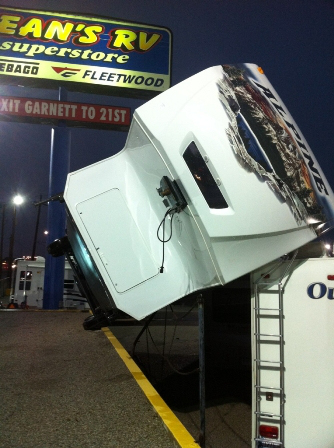
Straight-line winds can exceed 125 mph and are not associated with a tornado, but are responsible for most of the damage during thunderstorms. A “downburst” or “microburst” occurs in an area of rapidly descending air beneath a storm, causing these destructive winds.
Any winds in excess of 30 mph, but especially above 50 mph, can cause damage to parked RVs. This is especially true when awnings and slides are out, if the RV has a high center of gravity like a fifth wheel or tall trailer, or when parked with the long side of your rig facing the wind. Parking with the front or back of the RV facing the wind is optimal (preferably with the back facing the wind for motorized RVs, so any large debris doesn’t go through your windshield) so there is less surface area for the wind to hit and less chance of tipping over.
Another danger lies while driving: straight-line wind gusts, dust storms that reduce visibility, airborne and road debris, and other motorists – especially 18-wheelers, who are just as prone to tipping over. Check weather forecasts for the wind speeds throughout the day and plan your driving accordingly.
5.) Flash floods do live up to their name.
Listen carefully to news in your area about flood warnings and be prepared to evacuate at a moment’s notice – these floods do happen in a flash! You don’t usually have time to move your RV, so just focus on getting yourself to higher ground and staying safe.
Do not attempt to cross any water higher than your ankles. As little as 6” of water flowing quickly can knock an adult down, not to mention it could be contaminated or contain hazards such as poisonous snakes.
If you’re driving in a car or RV and come across a flooded road, turn around and head the other way. Fewer than 2 feet of water can sweep a car away or stall it out – with you stuck inside.
During and after a flood, your water supply may also become contaminated. Be sure to check for boil alerts (or just boil it anyway for safety) before drinking and cooking with it or giving it to your pets to drink.
Weather Tools to Stay Prepared
Your best course of action is being as proactive as possible in preparing for a weather event and staying continually informed of conditions – never assume a tornado siren will alert you, that someone is going to come to your door to tell you where to go and when, or that you’re not in danger because you’re in an area not historically prone to storms.
EarthSky.org suggests “Don’t depend on just one source of info, such as a weather app. Have multiple ways of receiving weather information, especially when weather turns potentially dangerous. Own a NOAA Weather Radio. Own a few weather apps that notify you when a warning has been issued. Be aware of great weather websites and individuals to follow via social media. Tuning into your local television station for live weather updates is critical. They understand the area, the roads, the places, and the terrain.”
Wow, so there are lots of tools out there to get weather information! Where do you start?*
Websites
Websites like Weather.com can provide a high-level overviews of current conditions and warnings, but that’s not always enough for those of us who live predominantly outdoors. Visit http://www.spc.noaa.gov/ and search for your location to see more in-depth maps, detailed local forecasts, and information about weather conditions that especially affect RV owners, such as upcoming freezing temperatures, wind speeds by hour, and wildfire warnings.
Weather Underground uses nearby weather stations to show you conditions around you plotted on a map, including wind direction and speed.
Weather Radios
Weather radios are designed to audibly alert you to local weather risks, but they require that you input the NOAA county code for wherever you are. If you move often, like we tend to do, it can be difficult and time consuming to figure out what county you’re in, or you may forget to program it after changing locations.
A weather radio is an essential item to have on hand, but as a backup in case you forget to program it, we’d recommend a location-detecting app too if you have a smartphone or iPad with cellular data. Click here for more information on buying weather radios, from the NOAA.
Weather Apps
NOAA has mobile version of their website with a lot of the same functionality as their website. Bookmark it to your phone’s home screen and it’s just like having an app!
The Weather Underground app offers the same in-depth map displays as the website, based on local weather station data, and the ability to filter by different conditions you want to monitor.
iMap Weather Radio app (for Apple and Android) issues critical alerts via voice and push notification regarding life-threatening weather events. The app goes a couple steps beyond a weather radio and uses cell towers to map your precise location in proximity to the severe weather polygons drawn by the National Weather service, without having to manually add your location when you change locations. Most other apps and radios still use county- or zipcode-based alerts, meaning you’d get an alert even if your location in the county is not within the threatened area.
Even if you don’t use Twitter regularly, it’s worth setting up an account to follow a list of users who Tweet weather information. Twitter is the fastest way besides the local news to get up-to-the-second updates from both weather experts and common bystanders during weather events.
A few accounts you might follow include:
@NWS
@NWSSPC
@NWS[your city’s name]
@NWSWestern
@NWSCentral
@NWS_Southern_US
@NWSEasternRegHQ
@GCarbin
@weatherchannel
@CNNWeather
@stormchaser4850
@USWeatherExpert
@severewarn
@severestudios
@TornadoTitans
@breakingweather
@THESarahD29
@USTornadoes
@WCL_Shawn
That’s it for our high-level overview of severe weather tips for RVers. Huge thanks to the National Weather Center for allowing us to tour their facility and meet with a meteorologist one-on-one. If you have any thoughts, questions or additional recommendations please feel free to leave them in the comments section below!
* Disclaimer: We have not used and tested all these apps, and thus we cannot endorse them. We’re passing along third-party recommendations to you, but do intend to try them all out ourselves moving forward!

